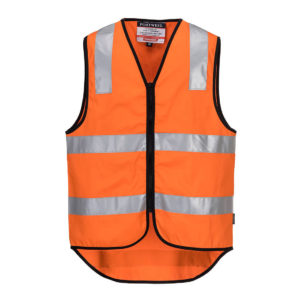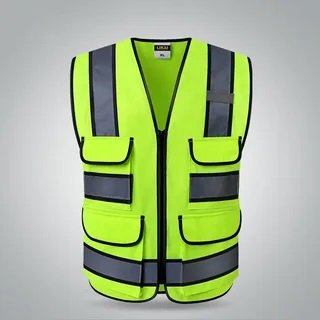If you've got a dog or cat, you know how frustrating it can be to…
The Complete Handbook on High Visibility Vest
When it comes to safety on the road or in hazardous work environments, high visibility vests play a crucial role. These vests, also known as hi-vis vests or reflective safety vests, are designed to make individuals easily visible to others in low-light or high-traffic areas.
In this complete handbook on high visibility vest, we will explore everything you need to know about these essential safety garments.
What is a High Visibility Vest?
A high visibility vest is a brightly coloured garment that is typically made of fluorescent or retro-reflective materials. The purpose of these vests is to ensure that individuals wearing them are easily seen by others, especially in poor lighting conditions.
The fluorescent materials used in these vests are highly visible during the day, while the retro-reflective materials reflect light back to their source, making the wearer visible at night or in low-light situations.
Why are High Visibility Vests Important?
- Enhanced Safety
High visibility vests significantly enhance safety in various environments. They help prevent accidents by ensuring that individuals are easily spotted by drivers, machinery operators, or other team members.

- Legal Compliance
In many countries, wearing high visibility vests is a legal requirement in certain work environments, such as construction sites, roadwork, and airports. Adhering to these regulations not only avoids penalties but also demonstrates a commitment to safety.
- Increased Awareness
By wearing a high visibility vest, you make others more aware of your presence. This is particularly important for pedestrians, cyclists, and motorcyclists who share the road with larger vehicles.
Types of High Visibility Vests
High visibility vests come in various styles, each suitable for different purposes. Here are some common types of high visibility vests:
- Class 1 Vests
Class 1 vests provide the lowest level of visibility and are mainly suitable for low-risk environments. They have limited fluorescent fabric coverage and reflective strips, making them ideal for warehouse personnel, parking attendants, or delivery drivers.
- Class 2 Vests
Class 2 vests offer higher visibility and are designed for moderate-risk environments. These vests provide more fluorescent fabric coverage and additional reflective strips, making them suitable for road construction workers, utility workers, and surveyors.
- Class 3 Vests
Class 3 vests provide the highest level of visibility and protection. They are designed for high-risk environments and provide maximum coverage of both fluorescent fabric and reflective strips. Class 3 vests are typically worn by emergency responders, highway road crews, and tow truck operators.
Features to consider
When choosing a high visibility vest, there are several features to consider:
- Fabric Quality
Look for vests made from durable, breathable, and moisture-wicking materials to ensure comfort and longevity.
- Reflective Strips
Check for high-quality reflective strips that meet safety standards and provide optimal visibility.
- Closure Type
Choose between hook and loop, zipper, or snap closures based on personal preference and ease of use.
- Pockets and Compartments
Some vests include pockets or compartments for storing small tools, ID cards, or mobile phones.
- Size and Fit
Ensure the vest fits well and allows for easy movement. Adjustable features like straps and elastic sides can provide a better fit.
Summing Up
High visibility vests are indispensable safety garments that play a vital role in preventing accidents and ensuring visibility in various environments. By understanding their importance, types and features, you can make an informed decision when selecting a high visibility vest that provides optimal safety and visibility in your workplace or daily activities.













